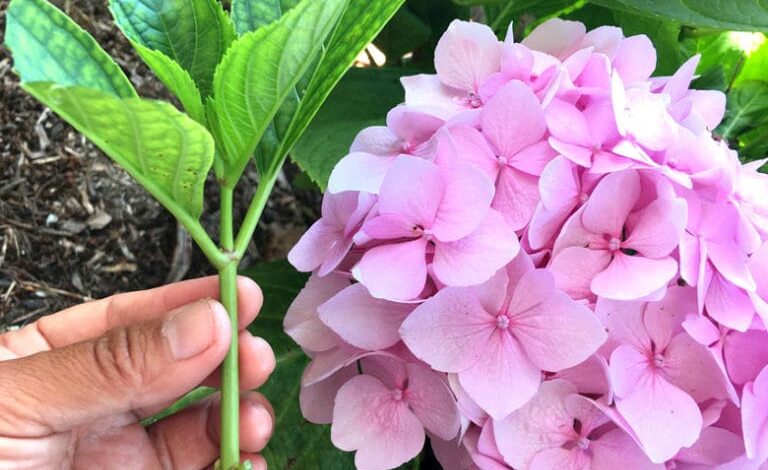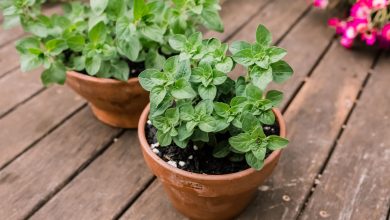8 ways to multiply or reproduce the plants of your garden and garden

Do you have a small orchard or garden and want to increase the number of plants you have? Do you want to make the best possible use of your garden and reproduce the plants you already have for yourself?
Pay attention to the content that we have prepared for you about 8 ways to reproduce plants . Surely several of these techniques will be useful and easy to apply.
We also advise you which organic seeds to use , the best planters, growing boxes and tables for your garden and essential books to learn everything about organic gardening .
The multiplication or reproduction of plants
It is best to start with the basics so that you have everything clear from the beginning. This way you will know that sexual and asexual reproduction are the two forms of reproduction of plants . The sexual is through seeds and the asexual uses various techniques such as layering, cuttings, stakes, rhizomes, tubers, bulbs and by division.
Asexual reproduction is used when plants produce very few seeds, when the use of seeds would lengthen production too much, or in cases where you want to maintain the characteristics of the mother plant.
We are going to know 8 different ways to multiply or reproduce your garden and garden plants:
1.- Seeds (sexual reproduction)
If you remember what the teachers told you when you were little, for a plant to reproduce you must sow its seed. This seed contains a gamete made up of two cells and will grow when it finds optimal conditions in the environment that you must provide, such as fertile soil, sufficient water and shade or sun, depending on the species.
- Collection : In order to have quality seeds, once the plant dries, you must collect them and store them in a place without humidity, to prevent them from being damaged by the appearance of fungi. It is ideal that you place them in paper bags in which you can write down the name of the plant and the date of harvest.
.
2.- Elbows
Layers, which can be aerial or terrestrial , consist of making a stem of the plant take root. With the layering technique you make a small cut in the lower part of the selected plant, fill it and cover it with substrate to ensure that it receives nutrients. It is done without cutting the branch of the carrier plant.
If it is an air layer you must hold it well, and if it is a ground layer, you must bury it in the ground. When the roots begin to develop, you need to cut it from the bottom very carefully and then you can transplant it.
This method of multiplication applies to sage, which is a woody plant, as well as vines. It is also used to reproduce jasmine.
3.- Cuttings
When we talk about cuttings we refer to stems of young branches or green stems that we cut from the mother plant to obtain a new plant .
The method is to put that green stem in water or in damp soil until it takes new roots. Once the roots are born, you can transplant it to its final site and offer it all the care it requires for its correct growth.
Is there a time of year when it is more beneficial to opt for this way of reproducing plants? It is usually advisable to plant cuttings in spring , when the climatic conditions are more optimal.
It is used on non-woody plants.
4.- Stakes
The method of planting by cuttings is similar to that of cutting, but the cut is obtained from harder or woody branches.
In this case, you must select a woody branch that has buds, cut a piece and put it in the ground. Once the roots sprout, wait for it to get a little stronger and later you can transplant it to the final growing place.
,
5.- Rhizomes
When we talk about rhizomes, ginger and turmeric (I leave you the links to each one so you can see in detail how you can grow them) are the best known examples. Do you visualize them?
Now you can understand that these are underground stems that grow buried and that they need to be parallel to the surface of the soil.
The rhizomes give rise to the roots and stems of new plants.
In flowers, lilies are among the plants that reproduce by rhizomes .
6.- Tubers
They are organs of the roots that present buds, as happens with potatoes , cassava or cassava and sweet potato . Tubers are underground stems that contain the plant’s nutrient reserves .
- Fact:
Tubers and rhizomes look a lot alike and you can get confused. Take into account these differential features:
- A true rhizome has a uniform thickness throughout its length.
- In a rhizome you can see that adventitious roots grow in its extension.
- No adventitious roots are formed at the nodes of the tubers.
- The tuber forms lateral branches.
- The rhizome forms the main shoot that gives rise to the new plant.
7.- Bulbs
The bulbs grow underground and are shaped like fleshy stems. They store nutrients that give rise to new plants . They are usually covered with thick leaves that act as reserve organs. It is important to know that more than one bulb can be produced from each bud.
Among the best-known bulbs are garlic and onions , and among the flowers are hyacinths, tulips and gladioli.
8.- By division
The technique of reproduction by division of the bush is used when the plant has produced many children and is too bushy. With this method you will have to divide the root ball of the plant into several pieces, taking care that each one has its roots. Then you must transplant them to the ideal place for their growth.
This is what is done with aloe vera or aloe vera .
> Read Organize your garden or garden with a field notebook
We hope these tips have been useful to you. In our blog you will always find valuable information on topics that may interest you.

![Photo of Orange Tree Irrigation: [Needs, Frequency and Procedure]](https://www.complete-gardening.com/wp-content/uploads/2022/08/orange-tree-irrigation-needs-frequency-and-procedure-390x220.jpg)

![Photo of Apple Tree Cuttings: [Grafts, Time, Rooting and Planting]](https://www.complete-gardening.com/wp-content/uploads/2022/08/apple-tree-cuttings-grafts-time-rooting-and-planting-390x220.jpg)
![Photo of White Astilbe: [Characteristics, Cultivation, Care and Disadvantages]](https://www.complete-gardening.com/wp-content/uploads/2022/08/white-astilbe-characteristics-cultivation-care-and-disadvantages-390x220.jpg)